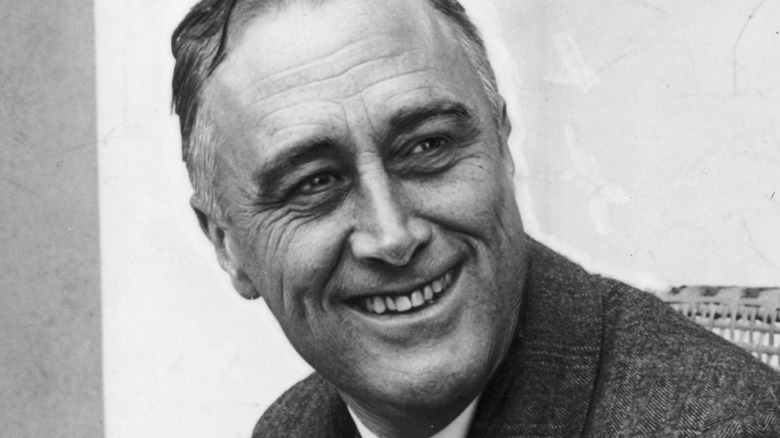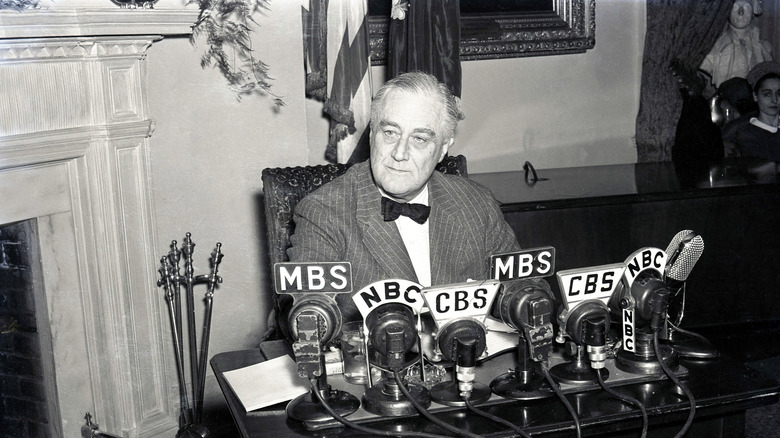The Real Reason There Was No Autopsy On Franklin D. Roosevelt
Franklin D. Roosevelt served as U.S. president during some of the most volatile years in American history. Beginning his first term in 1933, he oversaw the recovery from the Great Depression sparked off by the 1929 stock market crash and was reelected three times, almost seeing the country through the Second World War to the very end.
As The New York Times notes, his death on April 12, 1945 — just months before the devastating global conflict was finally brought to an end — shocked the nation and the world at large. No news of his declining health had been released to the public in the preceding years. As the New York Daily News reported the day after his death, Roosevelt was posing for a portrait when he suddenly said, "I have a terrific headache." Those would be his last words.
FDR's death certificate officially stated that his death was due to a cerebral hemorrhage. However, it appears as though we'll sadly never fully know the truth about what killed him. Research into his health yields everything from melanoma to high blood pressure to stomach and prostate cancer, but the exact truth about his failing health and what took his life was buried with him, as doctors did not perform an autopsy on his body. But, why?
Franklin D. Roosevelt hid his ailments from the public
While Americans have grown accustomed to being meticulously informed of the health of their elected leaders, this hasn't always been the case. Back when FDR was president, it was much more common for politicians to keep a stiff upper lip in the public eye, maintaining an image of strength and American grit in the face of even life-threatening circumstances. It looks like Roosevelt was one such case. It didn't do the country any good to have a sick and dying man at the helm during a crisis like World War II. It appears as those close to him wanted to maintain this image even in death.
And as The New York Times pointed out, FDR was not the only president to hold up a facade of toughness to the world to mask his declining health. In 1919, President Woodrow Wilson was left incapacitated after suffering a terrible stroke. But instead of informing a country and world reeling from the aftermath of the First World War and the 1918 pandemic of the Spanish flu, his wife and presidential aides took it upon themselves to run the government behind the scenes while he recovered. In the decades since, the American people have come to accept a bit more human vulnerability from our elected leaders, but any sign of physical weakness is still bad PR for any politician trying to maintain relevance, even as we increasingly choose the oldest among us to run the government.

